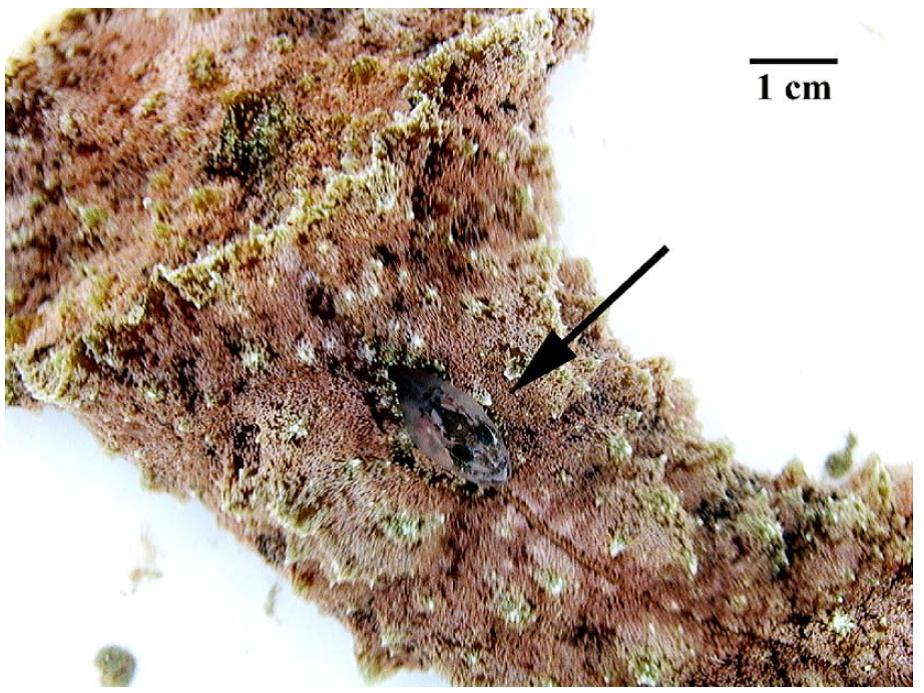Ecology
Wedge sea hares can be found in the reef crest lagoon on Heron Island, Australia. Wedge sea hares can also be found in rock pools or sub-tidal areas (Rudman 1999, Pennings et al. 1999). During the day, wedge sea hares are found under coral boulders and near patches of algae. At night they come out to feed, presumably when there are fewer predators (Pennings et al. 1993).
Reef Crest low tide, September 2012 at Heron Island, Australia.

A Pearlfish (Carapus mourlani) protruding through the incurrent siphon of a wedge sea hare from Uva Island Coral Reef, Panamá (Figure 2 from Glynn et al. 2008).
|
Pearlfish, Carapus mourlani (Petit, 1934), have been recorded to live in the mantle cavity of wedge sea hares in Panamá (Glynn et al. 2008). These pearlfish appear to have a commensal relationship with the sea hares, feeding on the microfauna
which live within the algae the sea hares eat. Pearlfish also live
within sea cucumbers and sea stars. Unfortunately, no pearlfish were
observed within the wedge sea hares collected from Heron Island in 2012.
|
Glossary
Mantle cavity: The body cavity within the gastropods which is connected by the incurrent and excurrent siphon.
Commensal: A relationship between two species where species A benefits from species B and species B is not affected by species A.
Microfauna: Very small animals that usually require a microscope to see. Examples are tiny crabs and related species.
|